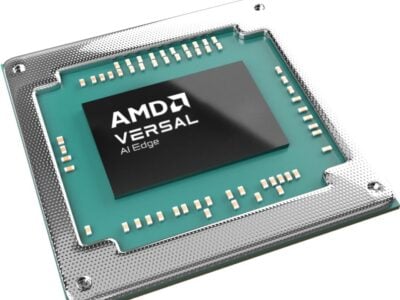
Fresco squeezes new life out of old analog
Fresco Microchip, a fabless semiconductor company, however, is challenging that common wisdom. By going after analog TV and hybrid [analog/digital] TV markets, the startup has grown like a weed over the last 12 months.
Separately, Fresco is planning to launch this year its own silicon tuners, which Fresco promises will deliver “the lowest cost system solution,” when paired with a TV SoC.
The secret to its success thus far, Fresco believes, is its almost fanatical focus on “serving ‘the underserved market,’” as Mike Gittings, Fresco’s vice president of marketing, tends to call it.
Fresco’s chip, by the company’s account, is already used in more than 100 TV models. It is believed to be inside many of the well-recognized CAN tuners such as those by LG, Sanyo, Panasonic and NuTune.
Fresco makes a hybrid TV receiver chip integrated with universal analog demodulation and multi-standard digital interface processing. The chip sits between a CAN or silicon tuner and a digital TV SoC. In the first quarter of 2010 alone, Fresco shipped about 5 million units of such hybrid TV receivers, and the company ended up shipping more than 30 million units all together by the end of last year.
TV broadcast in many countries is undoubtedly moving toward digital. But in practice, huge markets like China, India, Eastern Europe, Latin America and Africa have “no analog TV broadcast shutoff mandates,” explained Fresco’s Gittings.
In China, for example, 40 to 50 million TV sets are sold annually. “Only 10 percent of such units are equipped to receive both digital and analog TV signals, while the rest are analog TVs,” according to Gittings. Both in India and China, TV sets are definitely transitioning to flat panel screens, but not necessarily digital TV.
Talk about the underserved market.
In the last few months, Fresco has made a series of announcements. They include: the selection of Fresco’s analog demodulator by China’s TCL Tuner for its new tuner designs targeted for 2011 production; a new partnership with Maxim Integrated Products on a hybrid TV reference design, combining Fresco’s analog TV demodulation chip with Maxim’s broadband silicon tuner.
Fresco to launch silicon tuners
Traditionally, Fresco’s analog demodulator chip has been used in CAN tuners with mixer oscillator phase-locked loops (MOPLLs) supplied by Infineon, NXP and TI. Despite its old-fashioned look, MOPLL-based CAN tuner modules are still the de facto standard, accounting for the vast majority of tuners.
That said, thinner flat panel TV designs are demanding smaller and lower-profile tuners. Silicon tuners, which eliminate the hundreds of high-profile inductors, capacitors and resistors required by MOPLL-based designs, are clearly better suited for next-generation tuner modules. In some cases, the silicon tuner is placed directly on the motherboard of the television to eliminate the CAN module for ultimate cost reduction.
Fresco is seeing now an opening to get into the silicon tuner business on its own. The goal is to develop a hybrid silicon tuner that can handle analog TV signals just as effectively as digital TV signals.
Although making no formally announcement, Fresco’s Gittings hinted that the company is gunning for its own hybrid silicon TV tuner. Fresco, in fact, is already sampling it to its select customers.
How does it differ, then, from silicon tuners already on the market? While competitors’ silicon tuners include certain circuits which are duplicated in the SOC, Fresco claims that the company’s new silicon tuner eliminates these redundant circuits in the tuner so that when paired with the TV SOC, Fresco delivers “the lowest cost system solution.”
When it comes to analog TV demodulation already designed into global hybrid TV models, “nobody has as much field experience as we do,” said Gittings. Of its design wins in more than 100 TV models, Fresco has gained significant amount of first-hand engineering experience with analog and digital TV demodulation in every region in the world. They include NTSC, PAL and SECAM along with ISDB-T, ATSC, QAM, DVB-T, DVB-T2 and others.
“Test houses use us as a baseline” for analog TV demodulation, claimed Gittings. “We are the de facto standard on the field, and nobody has been able to tackle the hybrid [analog and digital] problems like we do.”
For Fresco to “apply its modern technology to the ancient problem” as described by Gittings, the timing to get into the silicon tuner business couldn’t be any better.
Analog TV component vendors, especially CAN tuner suppliers, are already ramping down their business.
In an early sign of this trend, NuTune, a joint venture founded in 2008 in Singapore to combine NXP Semiconductors’ and Technicolor’s CAN tuner module operations, was sold late last year to American Industrial Acquisition Corp. (AIAC). AIAC, whose business is in purchasing and turning around distressed manufacturing units, provides corporate and private equity sellers a rapid exit for challenging holdings.
Second, many Japanese companies have schedules dates for closing their doors [for CAN tuner], according to Gittings.
Third, as flat screens take over emerging markets, the demand for silicon tuners is growing.
But at a time when Chinese vendors’ chip solutions already dominate Chinese TV OEMs/ODMs’ design wins, how is Canada-based Fresco going to compete? Gittings made it clear: “We are not afraid to play in a price-competitive market.” Fresco prides itself not only on high-quality performance in its analog and hybrid TV demodulator chips but also its ability to meet the lower price demanded by many OEMs and ODMs in China.
 If you enjoyed this article, you will like the following ones: don't miss them by subscribing to :
eeNews on Google News
If you enjoyed this article, you will like the following ones: don't miss them by subscribing to :
eeNews on Google News



